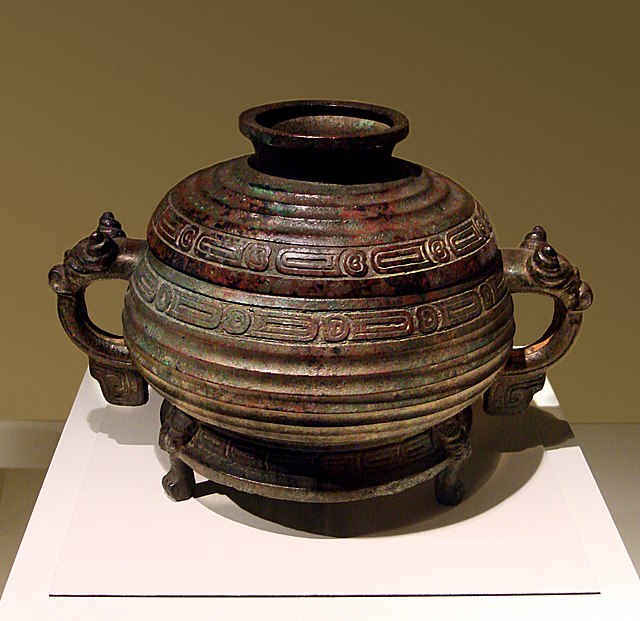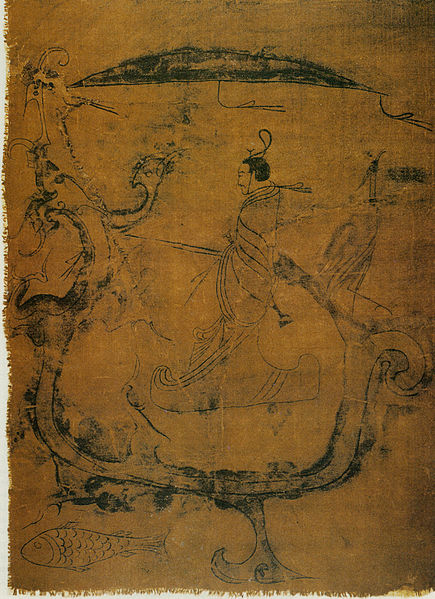Dan, Duke Wen of Zhou, commonly known as the Duke of Zhou, was a member of the royal family of the early Zhou dynasty who played a major role in consolidating the kingdom established by his elder brother King Wu. He was renowned for acting as a capable and loyal regent for his young nephew King Cheng, and for successfully suppressing the Rebellion of the Three Guards and establishing firm rule of the Zhou dynasty over eastern China. He is also a Chinese culture hero credited with writing the I Ching and the Book of Poetry, and establishing the Rites of Zhou.
Portrait of the Duke of Zhou in Sancai Tuhui
Painting of the Duke of Zhou by Kanō Sansetsu. Japan, Edo period, 1632.
Statue of the Duke of Zhou who founded a city on the site of modern Luoyang c. 1038 BCE
As depicted in the album Portraits of Famous Men c. 1900 CE, housed in the Philadelphia Museum of Art
The Zhou dynasty was a royal dynasty of China that existed for 789 years from c. 1046 BC until 256 BC, the longest such reign in Chinese history. During the Western Zhou period, the royal house, surnamed Ji, had military control over ancient China. Even as Zhou suzerainty became increasingly ceremonial over the following Eastern Zhou period (771–256 BC), the political system created by the Zhou royal house survived in some form for several additional centuries. A date of 1046 BC for the Zhou's establishment is supported by the Xia–Shang–Zhou Chronology Project and David Pankenier, but David Nivison and Edward L. Shaughnessy date the establishment to 1045 BC.
States of the Western Zhou dynasty
Western Zhou bronze pot (896 BC), Fufeng County, Shaanxi – Baoji Zhouyuan Museum
A Western Zhou ceremonial bronze of cooking-vessel form inscribed to record that the King of Zhou gave a fiefdom to Shi You, ordering that he inherit the title as well as the land and people living there
Silk painting depicting a man riding a dragon, painting on silk, dated to 5th–3rd century BC, from Zidanku Tomb no. 1 in Changsha, Hunan








